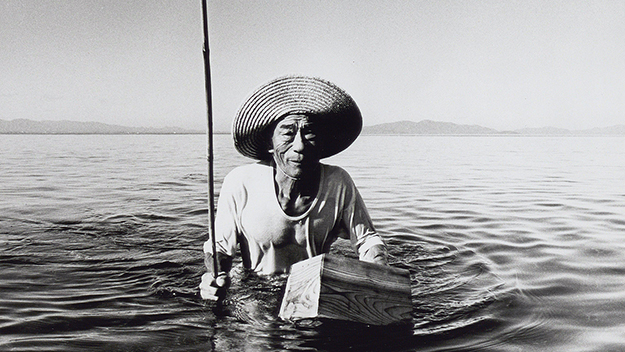Film Comment Recommends: The Films of Noriaki Tsuchimoto
This article appeared in the November 23, 2022 edition of The Film Comment Letter, our free weekly newsletter featuring original film criticism and writing. Sign up for the Letter here.

Minamata: The Victims and Their World (Noriaki Tsuchimoto, 1971)
Named for the small coastal Kumamoto Prefecture city where it was first identified, “Minamata disease” subverts the myths of postwar Japan’s economic miracle, revealing the brutality of capitalism on a human scale. While the Chisso Corporation expanded chemical production, including as a state-backed enterprise in colonized Korea, its Minamata factory disposed of industrial wastewater from 1932 to 1968, contaminating fish and shellfish around Minamata Bay and the Shiranui Sea. Local communities that had depended on the sea for nourishment and livelihood were severely impacted by this neurological disease caused by methylmercury poisoning.
The filmmaker Noriaki Tsuchimoto—who passed away at the age of 79 in 2008—made a series of urgent documentaries about the Minamata crisis. Active from the late ’50s to the early 2000s, Tsuchimoto turned to cinema for a new outlet for the political commitment that had driven him as a student radical in the Japanese Communist Party starting in the late 1940s. Beginning with educational and PR industrial films at the surprisingly experimental Iwanami Productions, Tsuchimoto went on to direct independent documentaries on topics ranging from immigrant rights to late-’60s student movements in Japan to the effects of radioactive contamination. The Museum of the Moving Image’s ongoing retrospective of the director’s works, which follows programs at Open City Documentary Festival and ICA in London, offers a rare opportunity to experience these films in the cinema on archival 16mm prints with new English subtitles. Along with the recent availability of the Noriaki Tsuchimoto Papers at Yale University Library, this series promises to yield greater regional awareness of Tsuchimoto’s multifaceted works, which are particularly relevant amidst neoliberal America’s own disasters of disinvestment—from lead poisoning in Flint, Michigan to the water crisis in Jackson, Mississippi.
Tsuchimoto’s first documentary about the Minamata scandal was Minamata: The Victims and Their World (1971). The film conveys affected families’ stories in interviews and observational records of quotidian life, spotlighting the views of locals (especially caregiving women), which range from demands for reparations to a resigned “shikata ga nai, desu ne” (“it can’t be helped, can it”). Tsuchimoto subtly braids these scenes with accounts of local fishing practices that feature complex underwater photography, though he maintains an unshowy style that foregrounds the subjects’ craft rather than the director’s. This patient film culminates with scenes of victims attending Chisso’s shareholder meeting to demand that the rich and powerful drink their polluted water.
The raucous energy of the finale of Minamata: The Victims and Their World is sustained through 1973’s Minamata Revolt: A People’s Quest for Life, which follows locals stricken with the disease and their families as they participate in demonstrations and confrontational meetings to try and secure compensation and medical coverage. The Shiranui Sea (1975) takes on a more expository style, utilizing voiceover and illustrations to connect colonial regimes to the contemporaneous industrial exploitation of the vulnerable. In lyrical scenes—shot in full color, unlike his preceding Minamata works—Tsuchimoto again turns to local fishing practices and conversations with families. Often visible on screen as an interlocutor, the director opens up the complexity of the social relations surrounding the Minamata crisis, from neighbors’ scrutiny of the spending habits of those approved for compensation to discrimination against victims. Tsuchimoto would return to Minamata repeatedly in his later years, with each film a new experiment with the form and politics of documentary. Taken together, these works comprise a valuable case study for the many struggles against the systemic exploitation of life today.
Joel Neville Anderson is a visiting assistant professor of cinema studies and film at Purchase College, State University of New York. He programmed JAPAN CUTS: Festival of New Japanese Film from 2014 to 2021.







